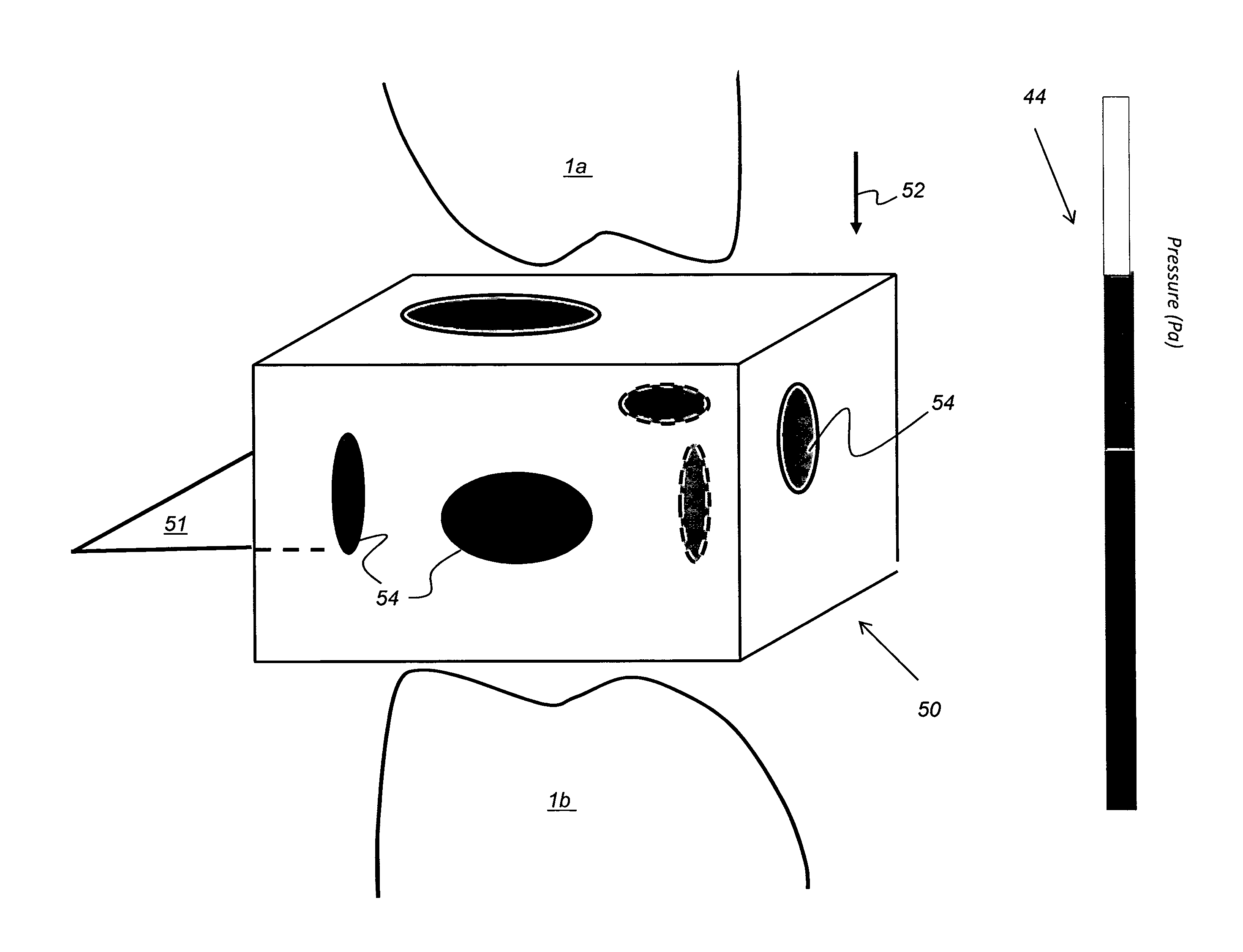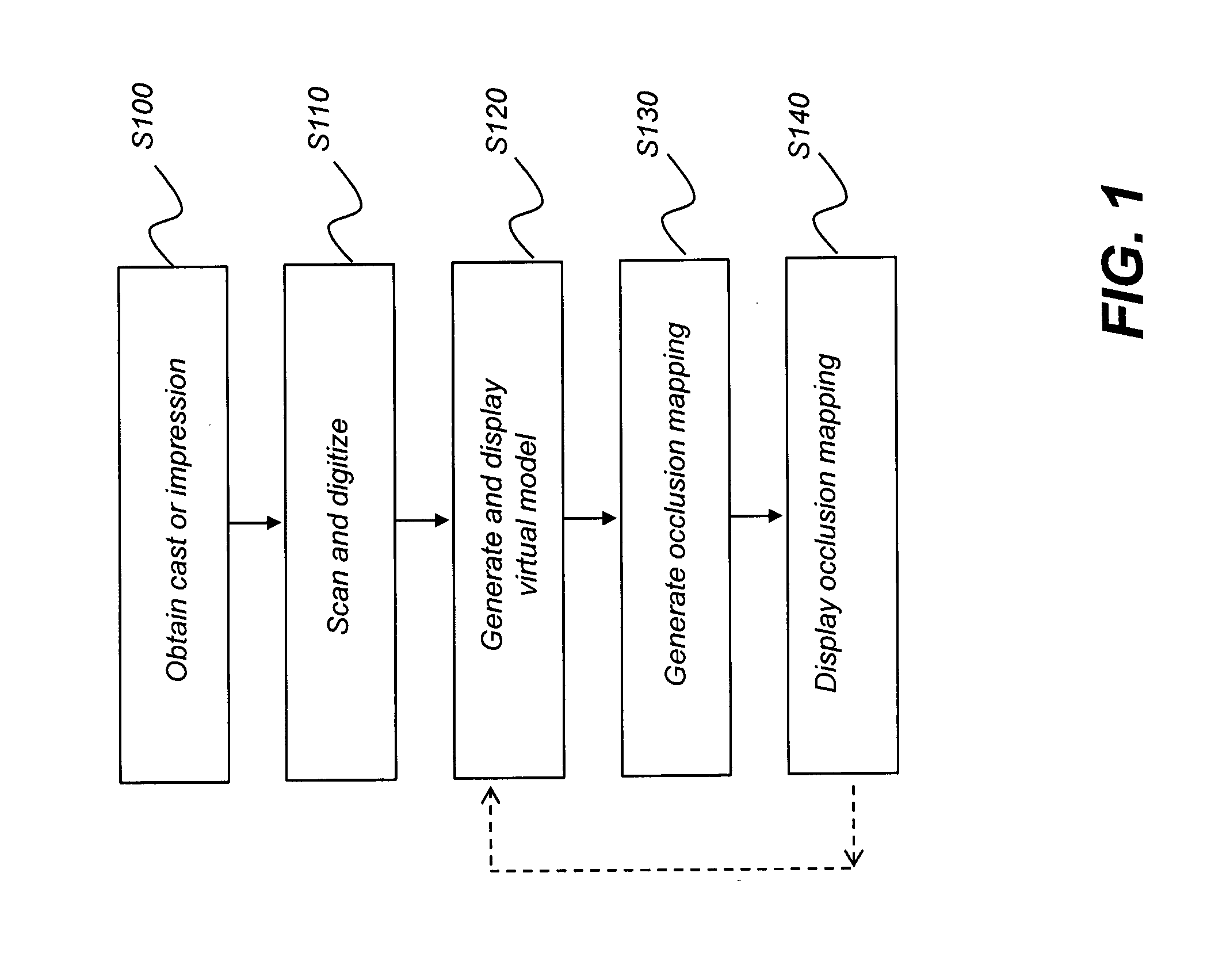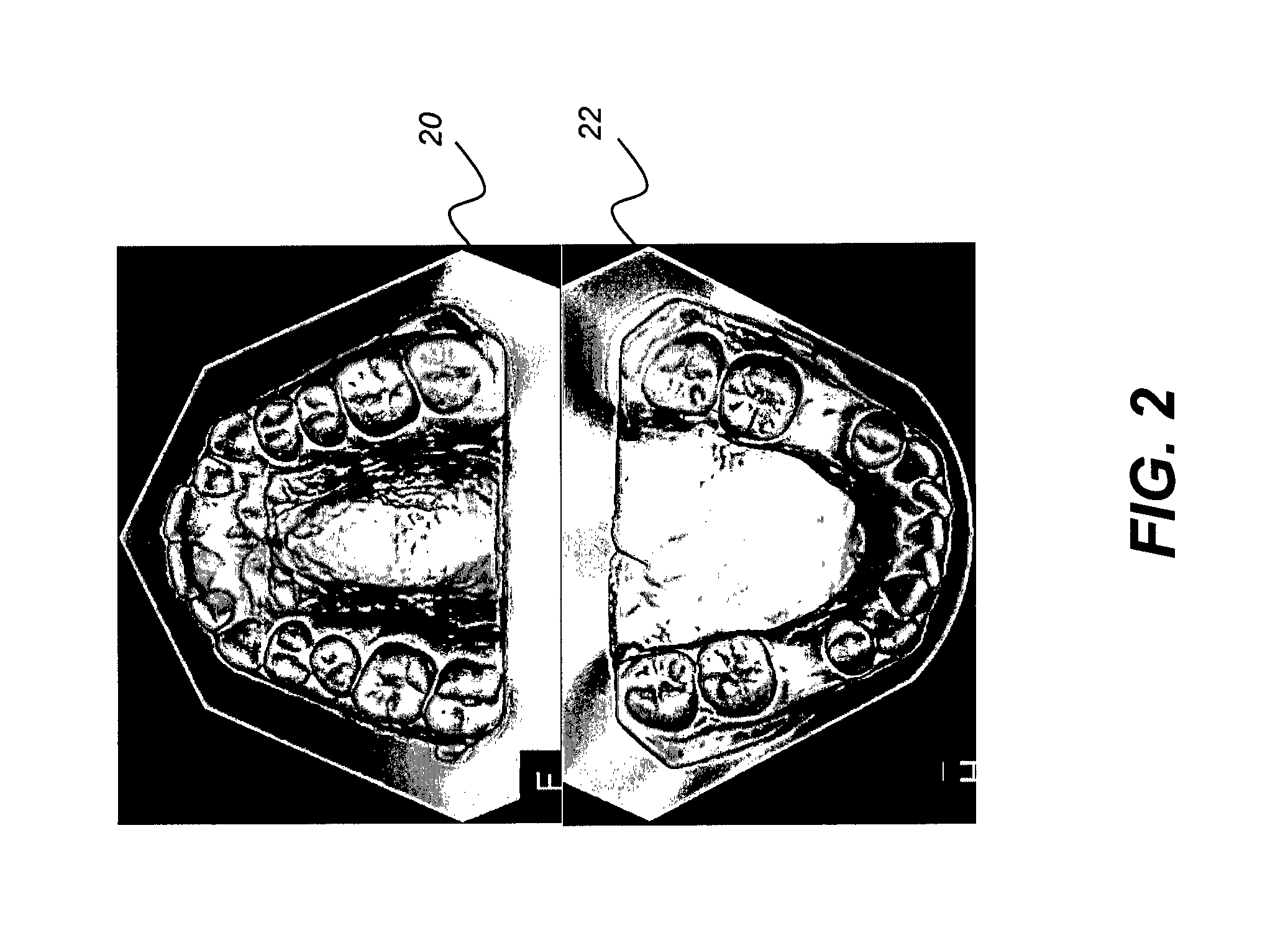Occlusion mapping using elastic foam modeling
a technology of elastic foam and occlusion, applied in the field of occlusion mapping, can solve the problems of not providing detailed three-dimensional (3-d) information about occlusion, occlusion information is generally limited to data, and distance mapping yields only limited information on how teeth in the upper and lower jaws work together to chew efficiently
- Summary
- Abstract
- Description
- Claims
- Application Information
AI Technical Summary
Benefits of technology
Problems solved by technology
Method used
Image
Examples
Embodiment Construction
[0020]The following is a detailed description of the preferred embodiments of the invention, reference being made to the drawings in which the same reference numerals identify the same elements of structure in each of the several figures.
[0021]Where they are used, the terms “first”, “second”, “third”, and so on, do not necessarily denote any ordinal or priority relation, but may be used for more clearly distinguishing one element or time interval from another.
[0022]In the context of the present disclosure, the term “image” refers to multi-dimensional image data that is composed of discrete image elements. For 2-D (two-dimensional) images, the discrete image elements are picture elements, or pixels. For 3-D (three-dimensional) images, the discrete image elements are volume image elements, or voxels.
[0023]The described embodiments relate to providing information in a form that is useful for examining the arrangement of structures of the dental arches for displaying each dental arch in...
PUM
 Login to View More
Login to View More Abstract
Description
Claims
Application Information
 Login to View More
Login to View More - R&D
- Intellectual Property
- Life Sciences
- Materials
- Tech Scout
- Unparalleled Data Quality
- Higher Quality Content
- 60% Fewer Hallucinations
Browse by: Latest US Patents, China's latest patents, Technical Efficacy Thesaurus, Application Domain, Technology Topic, Popular Technical Reports.
© 2025 PatSnap. All rights reserved.Legal|Privacy policy|Modern Slavery Act Transparency Statement|Sitemap|About US| Contact US: help@patsnap.com



